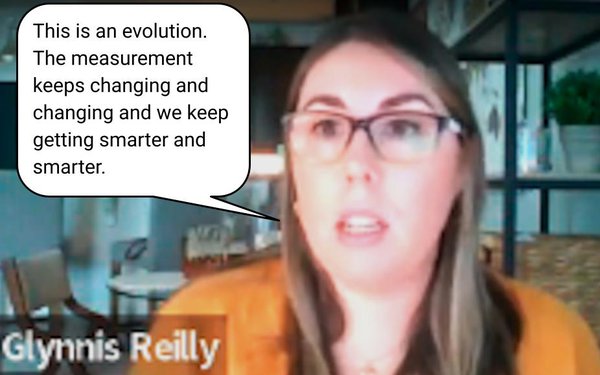
In a move that could effectively recalibrate the
way advertisers and agencies value out-of-home media in the U.S. – especially its reach and frequency – the industry’s audience location measurement service this week began releasing
new data adding hundreds of thousands of transit media inventory not previously accounted for.
The new data being released by Geopath, covers a full year represent Sept. 21, 2021 to
Aug. 31, 2022, and updates its reach and frequency model to include transit media, including stations and “scheduled fleet media.”
Ironically, scheduled fleet media is
not a term described on Geopath’s glossary of terms, but the glossary does describe various forms of transit media, including display ads in transit
terminals and stations, as well as posters placed on buses and commuter railroads.
advertisement
advertisement
A spokesperson clarified that it includes "bus-side advertising" and providing this link illustrating examples.
During a preview of the new data streamed by Geopath late last week (see video at bottom), executives
from both the buy and sell side of out-of-home media hailed the new data as vital to updating the way the ad industry values the medium, especially the ability to more comprehensively account for the
reach and frequency of out-of-home advertising campaigns.
“From a buyer’s side, reach and frequency is obviously one of our key benchmarks that we’re
constantly looking at throughout the entire planning process,” said Horizon Media Vice President of Out-of-Home Glynnis Reilly, adding: “We're looking at it to help set budgets. We look at
it to tell stories to clients.”
She said Geopath’s new reach and frequency model will enable marketers to understand the audience weight of their campaigns in a given
local market.
Geopath President Dylan Mabin said the new data will be available for a “four to five week adoption” period to give users an opportunity to assess it and
ask questions, but that it would be the U.S. out-of-home industry’s new standard, replacing older studies conducted in past years.
He said the inclusion of transit media adds
“hundreds of thousands” of pieces of out-of-home inventory to the mix, noting, “It’s going to take a while to ingest.”
Aside from the increased supply
of inventory, he said the biggest change related to the new data is its impact on Geopath’s “reach models,” which he said are much more narrowly plotted vs. a much wider scatter shot
view depicted in previous models (see graphic below).

“The cumulative reach and frequency that you’re going
to see when you’re putting inventory into a package is going to make sense,” he said. “It’s going to feel good, because it is right. And we have the metrics to back it up. We
have observed data that we’ve been able to verify against.
Horizon’s Reilly described the new data and model release as part of an ongoing process for improving the way
the ad industry calculates the medium.
“This is an evolution. The measurement keeps changing and changing and we keep getting smarter and smarter,” she said, adding that
she is “more confident” about Geopath’s new reach and frequency models.
In fact, the U.S. out-of-home advertising marketplace is poised to evolve yet again soon, according to
comments made by Mabin and Media Research Council CEO George Ivie at an American
Association of Advertising Agencies conference earlier this month.
Ivie disclosed that an official MRC out-of-home measurement standard is "imminent."